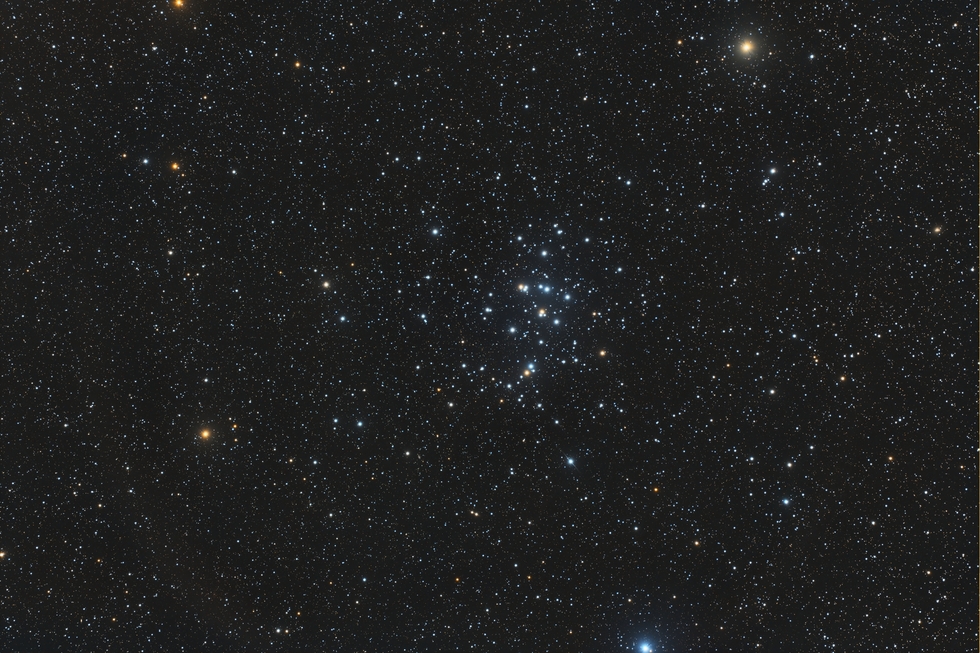Messier 44 - Beehive
Messier 44 - Beehive
Cancer is a very subtle constellation, made of barely visible stars from the light polluted city sky. However, this small area of the sky hides one of its biggest treasures – the open cluster Messier 44, known as the Beehive or Praesepe (Latin = manger). On a dark sky, the Beehive is visibile with the naked eye, having an apparent magnitude of +3,7. It is one of the closest clusters to the Sun, at a distance of 610 light-years.
Ptolemy described it as a nebulosity in the middle of Cancer, and the Greeks and Romans saw it as the manger from which the 2 donkeys that guard it drink water – the stars called Asellus Borealis (γ Cancri) and Asellus Australis (δ Cancri). M 44 was described by many ancient astronomers as a “little cloud in Cancer’s breast” (Hipparchus) or as a “mysterious haze” (Aratus). In 1609, Galilei was the first one to separate individual stars, counting around 40 of them. He added the cluster to his catalog of much dimmer objects in order to surpass his rival, Lacaille, who at that time already had 42 objects in his list.
Today we know that the clyster has around 1.000 stars spread on 30 light-years. Its age is 600 million years old, similar to the Hyades with which it looks like it shares a common origin. The brightest star in the cluster is Epsilon Cancri, a white subgiant with an apparent magnitude of +6,3.
In this cluster we can find many exoplanetary systems – Kepler mission found 20 exoplanets which are confirmed or are on the path to being confirmed.
Ptolemy described it as a nebulosity in the middle of Cancer, and the Greeks and Romans saw it as the manger from which the 2 donkeys that guard it drink water – the stars called Asellus Borealis (γ Cancri) and Asellus Australis (δ Cancri). M 44 was described by many ancient astronomers as a “little cloud in Cancer’s breast” (Hipparchus) or as a “mysterious haze” (Aratus). In 1609, Galilei was the first one to separate individual stars, counting around 40 of them. He added the cluster to his catalog of much dimmer objects in order to surpass his rival, Lacaille, who at that time already had 42 objects in his list.
Today we know that the clyster has around 1.000 stars spread on 30 light-years. Its age is 600 million years old, similar to the Hyades with which it looks like it shares a common origin. The brightest star in the cluster is Epsilon Cancri, a white subgiant with an apparent magnitude of +6,3.
In this cluster we can find many exoplanetary systems – Kepler mission found 20 exoplanets which are confirmed or are on the path to being confirmed.
SPECIFICATIONS
Telescope
Takahashi FSQ-106ED f/3,6
Camera
QHY 600M
Location
Spain 3
Date of observation
April 2023
Filters
LRGB
Processing
PixInsight



